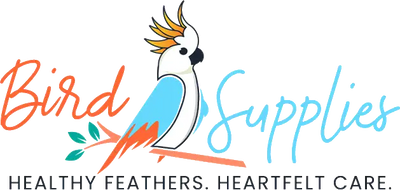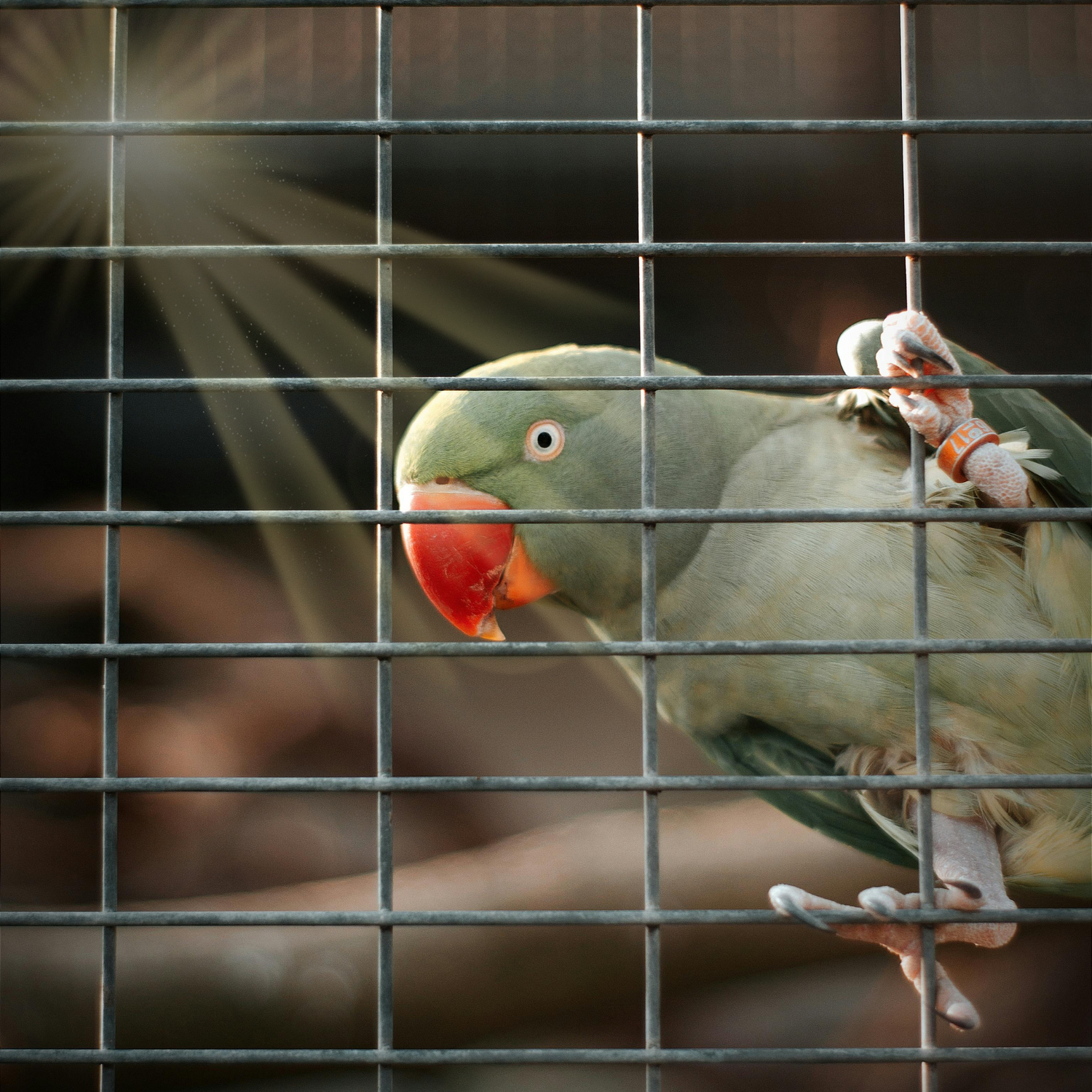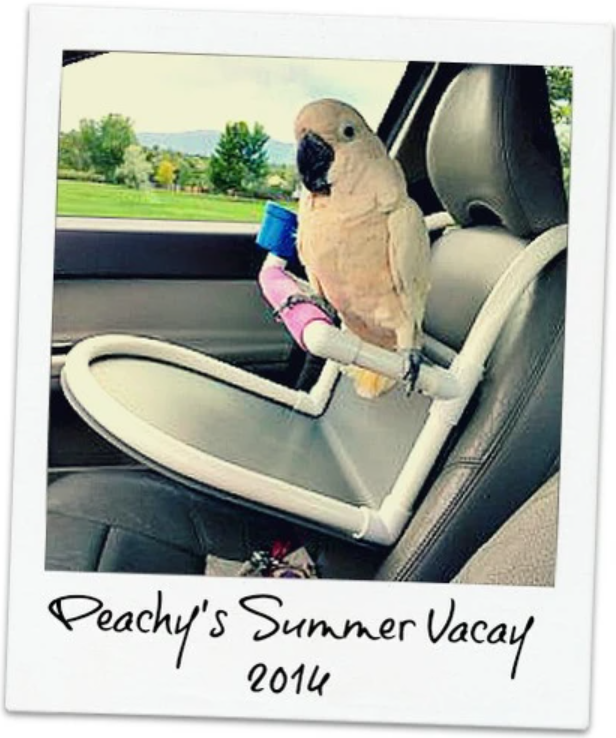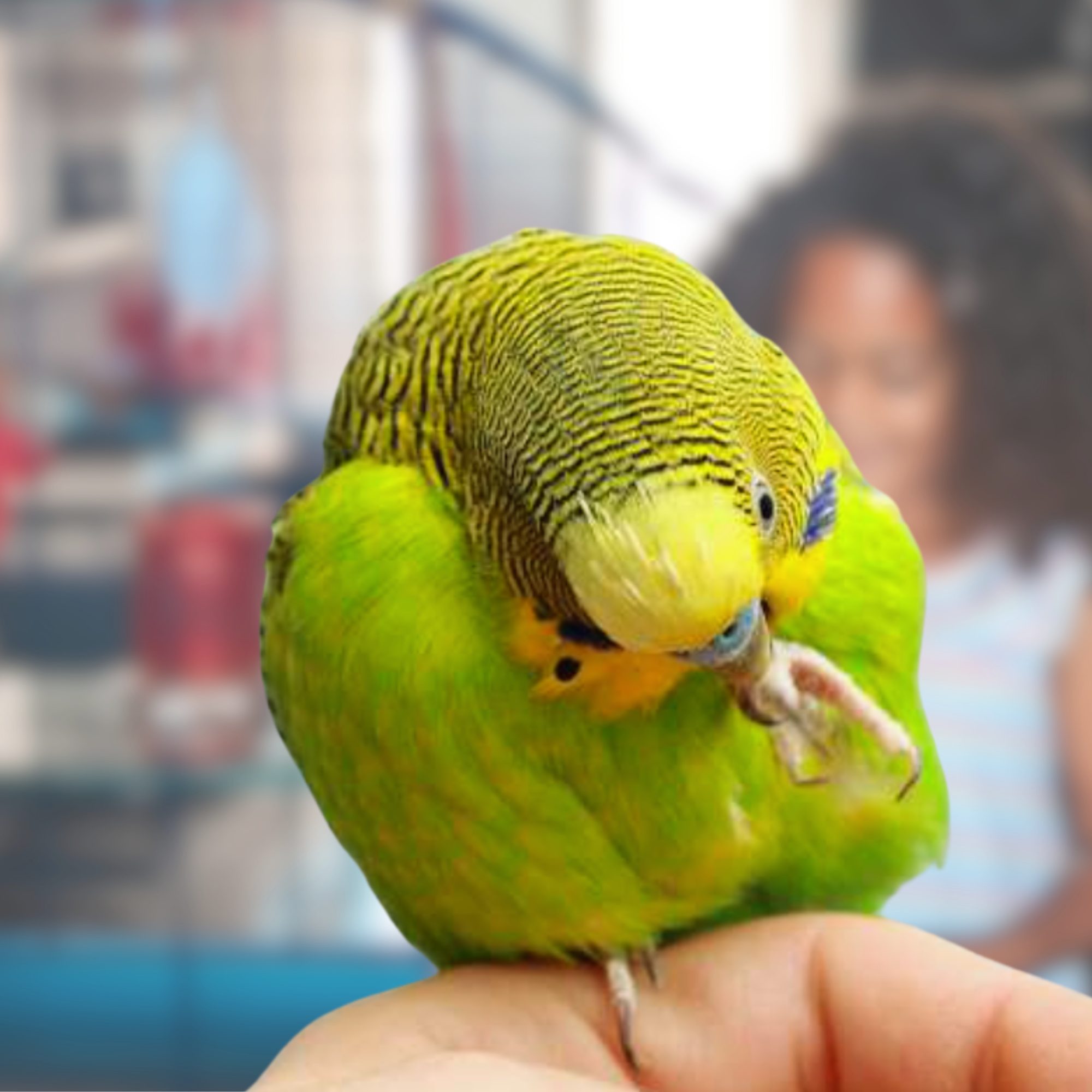- Why Summer Nutrition Matters for Pet Birds
- 5 Nutrients That Help Birds A Heat Stroke
- Build a Hydrating Summer Chop
- Foods to Avoid Feeding in Hot Weather
- Best Supplements for Birds During Summer
- Feeding Tips for Hot Weather Bird Care
- Common Summer Nutrition Mistakes
- FAQs: Feeding Pet Birds in Summer
Summer's here—and while we’re sipping iced tea and cranking the A/C, our feathered friends are feeling the heat in ways we often overlook.
Once temps creep into the 80s and 90s, it’s not just hot—it’s bird-stressing, feather-fluffing, panting, poop-splattering HOT.
Wild birds? They’ve got it figured out. They seek shade, bathe often, and forage for moisture-rich foods to stay cool and energized. But our indoor companions? They rely on you to mimic those natural survival strategies.
This blog is all about how to support your bird’s heat tolerance from the inside out—with cooling foods, smart supplements, and nutrition tips that keep your bird happy, hydrated, and healthy through the dog days of summer.
Keep reading to find out:
- What nutrients help regulate body heat
- How to build a hydrating summer chop
- And the biggest feeding mistakes to avoid when the mercury rises
Let’s dive in and give your bird the coolest summer ever—one bite at a time.
Why Summer Nutrition Matters for Pet Birds
How Heat Affects Birds Differently
Birds may be covered in feathers, but they don’t sweat like we do. That means when things heat up, their tiny bodies have to work extra hard to cool down.
In the wild, birds instinctively adjust—they rest in shaded areas, fluff their feathers to release body heat, and search for juicy, water-rich plants. But pet birds? They don’t always have those same options. That’s where nutrition comes in.
Feeding your bird moisture-packed foods and key nutrients can help them regulate their internal temperature more efficiently. The right diet literally gives their body the tools it needs to beat the heat—boosting hydration, reducing inflammation, and supporting cellular energy.
Think of summer nutrition like a cooling system from the inside out. When your bird eats the right foods, their body can handle heat stress more gracefully—without tipping into danger zone territory.
Signs of Bird Overheating Stress
Birds don’t always give obvious signs when they’re overheating. That’s part of their survival instinct—but it means you need to know what to watch for.
- Open-mouth breathing or panting
- Holding wings away from the body (wing-drooping)
- Fluffed-up feathers and lethargy
- Reduced appetite or dry-looking droppings
- Weakness or imbalance
Dehydration and overheat can sneak up quickly—especially in older birds, over-weight birds, small species, or those with underlying health conditions.
The good news? You can help prevent it. Once you’ve set up a cool, bird-safe environment, the next step is dialing in your bird’s diet.
Up next, let’s talk about the specific nutrients that help keep your bird cool, hydrated, and healthy during the hottest months of the year.
The Role of Nutrition in Thermoregulation
When the heat is on, your bird's body has one big job: staying cool without overheating. That process is called thermoregulation—and it takes energy, hydration, and the right nutrients to pull it off.
Every bite your bird takes can either help or hinder that cooling process. Some nutrients boost hydration, while others reduce internal inflammation, support feather function (your bird’s natural insulator!), and protect delicate respiratory tissues from heat stress.
This is why nutrition matters so much in the summer. You’re not just feeding for energy—you’re feeding for heat resilience. Let’s break down the top nutrients your bird needs when temperatures rise.

5 Nutrients That Help Birds Beat A Heat Stroke
Electrolytes for Hydration and Nerve Function
Electrolytes like potassium, sodium, and magnesium help your bird’s body stay hydrated, support nerve signaling, and keep muscles (including the heart!) working properly.
In hot weather, birds lose more moisture through respiration and droppings. Without enough electrolytes, their system can’t hold onto water—leading to faster dehydration and fatigue.
Pro tip: Offer water-rich foods like cucumber, melon, or soaked sprouts, and consider adding a bird-safe electrolyte supplement during heat waves or after a stressful event like travel or molting.
Omega-3s for Feather Health and Cooling
Omega-3 fatty acids do double duty in hot weather. They support healthy skin and feathers—which helps with insulation and cooling—and reduce inflammation throughout the body.
Cool, calm, and collected starts with cell membranes that stay fluid and strong under heat stress. That’s where omega-3s shine. They help your bird’s feathers stay in top shape and reduce internal heat from chronic inflammation.
Best sources: Chia seeds, flax meal, and bird-safe red palm oil in small, appropriate amounts.
Vitamin A for Skin and Respiratory Support
Vitamin A is crucial for keeping the skin, sinuses, and respiratory tract moist and healthy—especially in dry, hot weather when dehydration is common.
It helps maintain a strong first line of defense against irritants like dust, dry air, or even wildfire smoke. Vitamin A also supports immune health, which can take a hit during prolonged heat exposure.
Feed it naturally: Offer bright orange and dark leafy greens like carrots, sweet potatoes, and dandelion greens—rich in beta-carotene, which the body converts into vitamin A. You can also add a drop of Red Palm Oil to boost vitamin A intake safely.
Feed it naturally: Offer bright orange and dark leafy greens like carrots, sweet potatoes, and dandelion greens—rich in beta-carotene, which the body converts into vitamin A. You can also add a drop of Red Palm Oil to boost vitamin A intake safely.
Easy Summer Bird Chop Recipe
Here’s your revised **Summer Cool-Down Bird Chop** recipe scaled to make about **2 cups**, ideal for an adult cockatoo eating a few tablespoons a day. Portion sizes and ingredient amounts have been adjusted proportionally for small-batch prep, while still allowing you to freeze a few servings.
This small-batch summer chop is cool, hydrating, and packed with nutrients to help your bird thrive when temps rise. It’s easy to prep, freezer-friendly, and even better with a sprinkle of Avian Naturals!
Summer Cool-Down Bird Chop (Small Batch) Makes: ~2 cups (perfect for 5–7 servings for one large parrot) 🥒 1/3 cup cucumber, diced 🫑 3 tbsp bell pepper (any color), chopped 🥦 3 tbsp broccoli, finely chopped 🥕 3 tbsp shredded carrot 🟢 1/3 cup chopped kale, collard, or dandelion greens 🌱 2 tbsp fresh herbs (cilantro, basil, or parsley) 🌱 1/4 cup sprouted lentils or mung beans Optional cooked additions: 🍠 2 tbsp cooked sweet potato 🍚 2 tbsp cooked quinoa or brown rice (cooled) Toppers (per serving): 1/4 tsp OmegaGlow 1/4 tsp SereniTea 1/4 tsp Chamomile 1/2 tsp Red Palm Oil (optional boost for vitamin A & E) 💡 Directions: 1. Wash all produce thoroughly. 2. Chop or shred veggies to match your bird’s size. 3. Mix ingredients in a small bowl. 4. Portion into ice cube trays or silicone molds if making ahead. 5. Thaw and top with your favorite Avian Naturals before serving.
Want this as a printable recipe? Download the PDF here.
Why High-Protein Foods Increase Heat
During hot weather, your bird’s body is already working overtime to stay cool. But did you know that high-protein foods can actually make it harder for them?
Digestion of protein creates “metabolic heat”—meaning the more protein your bird eats, the more heat is generated. That’s great in winter, but in summer? It can raise their internal temperature the last thing they need.
That said—protein is still essential. Birds need it for muscle maintenance, feather growth, and immune function. The key is adjusting the amount and timing in warmer months.
Summer guideline: Aim for 10–15% of total food volume as protein, offered primarily in the cooler morning hours. The rest of the diet should focus on hydrating veggies, sprouts, and fresh greens to support internal cooling.
Watch out: Treats like eggs, nuts, seeds, legumes, and soy-pellets are fine in moderation—but feeding them in the afternoon or in large amounts can tip the scale toward heat stress.
Seasonal Protein Guidelines by Bird Size
| Bird Size | Winter Protein Intake | Summer Protein Intake |
|---|---|---|
| Small (Budgie, Cockatiel, Lovebird) | 15–20% of total diet | 10–12% of total diet |
| Medium (Conure, Quaker, Pionus) | 18–22% of total diet | 12–15% of total diet |
| Large (Amazon, African Grey, Cockatoo, Macaw) | 20–25% of total diet | 15–18% of total diet |
*Percentages based on food volume, not weight. Always consult with your avian vet for species-specific needs, especially during breeding, molting, or recovery.
Best Supplements for Birds During Summer
Natural Support for Heat Resilience
We’re in the home stretch—and this is the part that ties it all together. Diet is the foundation, but supplements? That’s your secret weapon for keeping your bird cool, calm, and thriving when the temps climb.
Think of supplements like summer wellness boosters. They help your bird recover faster from heat stress, support hydration, and even calm the nervous system during noisy, chaotic months (looking at you, 4th of July).
Whether your bird struggles with molting, panting, or just acts a little “off” in the heat, the right supplement can make a world of difference.
Key Ingredients in Summer Bird Supplements
Not all supplements are created equal. In the summer, you want ingredients that focus on hydration, inflammation reduction, skin and feather health, and stress resilience. Here's what to look for:
- Omega-3s – reduce inflammation, support brain and feather health
- Magnesium – supports muscle relaxation and hydration balance
- Chamomile – calms the nervous system without sedation
- Red Palm Oil – loaded with beta-carotene and vitamin E
- Biotin – strengthens skin and feathers, helps with molting
Recommended picks: OmegaGlow, Calmi Chamomile, Red Palm Oil, and FeatherUp multivitamin with biotin.
How to Integrate Supplements into Chop
Let’s be real—nobody wants a complicated supplement routine in the middle of summer. The easiest (and bird-approved) method? Mix your supplements right into their morning chop.
Here’s how:
- Use just a pinch of dried herb blends like Chamomile per serving
- Add a sprinkle of OmegaGlow for a crunchy texture birds love
- Stir in one drop of Red Palm Oil per 1–2 teaspoons of chop
- Use FeatherUp 2–3 times a week as a feather-loving nutrient boost
Start small, and rotate ingredients so your bird doesn’t get bored. Within days, you’ll notice better energy, smoother feathers, and more resilient behavior—no matter how hot it gets outside.
Feeding Tips for Hot Weather Bird Care
Timing and Serving Temperature
In summer, when and how you serve food can be just as important as what’s in the bowl. The best time to feed fresh chop or moist foods is early in the day—before the heat sets in.
Morning feeding = less spoilage, more interest, better hydration. Birds are naturally more active in the morning and more likely to eat their chop while it’s fresh and cool.
Avoid leaving fresh foods in the cage during peak heat (midday to afternoon), especially if your bird’s environment isn’t climate-controlled. Warm temps + moisture = bacteria breeding ground.
Always remove uneaten fresh food after 2 hours—sooner if your home is over 80°F.

Storage and Spoilage Prevention
Summer is not the time to take shortcuts on food safety. Chop made with fresh fruits and veggies can spoil fast—especially with humidity and warm air.
- Store prepped chop in airtight containers in the fridge
- Use silicone ice cube trays to portion and freeze for easy daily servings
- Label and date batches—you’ve got enough to remember without guessing!
- Don’t refreeze thawed chop—use within 24 hours for peak freshness
Visual cues: If the chop looks slimy, smells off, or changes color—toss it. Better safe than sorry when it comes to your bird’s delicate digestive system.
Chilling and Freezing Ideas for Enrichment
Want to beat the heat and banish boredom? Cold enrichment is where it’s at. Birds love foraging and exploring new textures, so summer is the perfect time to offer chilled or frozen treats they can safely peck at.
- Serve partially frozen fruit chunks in a foraging tray
- Fill a silicone mold with chop + topper and freeze into mini “chop pops”
- Use bird-safe ice cubes (no flavorings) in a shallow bowl for splashing fun
- Try chilled herbal tea cubes using SereniTea for a calming twist
Just like us, birds appreciate a break from the heat. These cool options offer both hydration and enrichment—and turn boring old feeding into something interactive and seasonal.
Common Summer Nutrition Mistakes
Overfeeding Fruit or Sugary Foods
Fruit feels like a summer win—but too much sugar can spike energy, stress the liver, and throw off hydration.
Feed this: Berries, kiwi, or melon in small bites Not that: Bananas, mango, dried fruit, or fruit juice
Relying on Dry Food Without Moisture
Pellets and seeds alone won’t cut it in the heat. Dry food = zero hydration, and your bird's body is already working hard to stay cool.
Feed this: Moisture-rich chop, soaked pellets, fresh veggies Not that: Only dry seed, dry nut treats, or dehydrated diets
Ignoring Seasonal Dietary Needs
Your bird's body changes with the seasons. What worked in winter might be too heavy or drying now. Adjust with intention.
🔥 Hot Tip: Summer Feeding Swaps
| ✅ Do This | 🚫 Stop That |
|---|---|
| Offer small portions of fresh berries, kiwi, or melon 🍓🥝 | Avoid bananas, mango, dried fruits, and fruit juice 🍌🥭 |
| Serve moist chop with soaked pellets and veggies 🥒🥦 | Don’t rely on dry seeds, crackers, or nuts alone 🥜🧂 |
| Adjust diet for the season—lighter, cooling, calming ❄️🌿 | Skip winter routines with high-protein or fatty foods 🍳🌰 |
FAQs: Feeding Pet Birds in Summer
🟤 Is it okay to feed pellets in hot weather?
Yes, but balance is key. Pellets are a great base, but they’re dry and low in moisture. In hot weather, pair them with water-rich foods like veggies, sprouts, or soaked pellets to support hydration.
🧊 Can I give cold or frozen foods?
Absolutely! Frozen fruit chunks or mini "chop cubes" can be fun enrichment on hot days. Just make sure they’re bird-safe and offered in moderation so you don’t chill your bird too much.
💧 How often should I change my bird’s water?
That white, cloudy stuff at the bottom of the water bowl? It’s bacteria—and it builds up fast in the heat. Change your bird’s water at least twice a day during hot weather, or anytime it looks murky, has food debris, or feels warm from sunlight. Wash bowls with hot, soapy water daily. Cool, clean water isn’t just refreshing—it’s life-saving in the summer.
🧼 How often should I clean the cage during summer?
Water splashes, fresh chop, bird poop, and summer heat create the perfect breeding ground for dangerous bacteria and fungus—especially Aspergillus, which can lead to deadly aspergillosis.
Wipe down cage bars and perches daily, and remove spoiled food from the grate right after meals. Deep-clean food and water dishes with hot, soapy water every day. And don’t forget the cage corners and crevices in the tray —check and clean them at least twice a week. Mold loves to hide where you can't see it.
.
In conclusion...
Your bird’s comfort and safety during hot weather starts with what’s in their bowl. The right summer diet is one bird care task that can help your bird tolerate warmer temperatures. Stock up on our cooling foods and supplements today—and protect your bird from the inside out.=
Related Posts:
Can Birds Die from Heat? 8 Summer Survival Tips
How Do I Keep My Bird Cool In The Summer?
3 Homemade Treats Your Parrot Will Lov this Summer
References:
Here’s your alphabetized list of references by **author last name**:
Cusick, D. (2023, October 26). Millions of baby birds are dying from extreme heat. Scientific American. https://www.scientificamerican.com/article/millions-of-baby-birds-are-dying-from-extreme-heat/
Doneley, B. (2010). Avian Medicine and Surgery in Practice (2nd ed.). Elsevier Health Sciences.
Duncan, I. J. H., & Mench, J. A. (1990). The welfare of poultry in relation to protein nutrition and thermoregulatory stress. Journal of Avian Medicine and Surgery, 4(3), 155–163.
Hawkins, M. G., & Kistler, W. S. (2006). Cloacal temperature and thermoregulation mechanisms in budgerigars (Melopsittacus undulatus). Journal of Avian Medicine and Surgery, 20(2), 96–102.
National Research Council. (2004). Nutrient Requirements of Poultry and Other Specialty Birds (2nd ed.). National Academies Press.
Tey, A. (2013, July 18). How to help birds beat the heat. Audubon Magazine. https://www.audubon.org/news/how-help-birds-beat-heat
Link to this blog
Here’s the APA-style reference with a hyperlink: Burroughs, D. (2025, June 24). Beat bird heat stroke—From the inside out. BirdSupplies.com. [https://birdsupplies.com/blogs/news/birds-in-the-heat-feed-this-not-that](https://birdsupplies.com/blogs/news/birds-in-the-heat-feed-this-not-that)
Diane Burroughs, LCSW, brings over 30 years of experience helping bird lovers build stronger, healthier bonds with their parrots. With a foundation in psychotherapy and Applied Behavior Analysis (ABA), Diane combines proven behavioral science with simple, real-life strategies anyone can use. Through her books, behavior consultations, and UnRuffledRx parrot wellness products, she’s dedicated to helping real bird owners create trust, confidence, and a lifetime of positive experiences with their feathered companions.
Diane's products been featured in the Journal of Avian Medicine and Surgery and at ExoticsCon, a national conference for exotic animal veterinarians. Her bird collars and supplements are trusted by avian vets and stocked in vet clinics across the U.S. With thousands of individualized behavior plans under her belt, Diane’s mission is simple: to help parrots and their people thrive together.
TAGS: #BirdHeatStroke #CanBirdsDieOfHeat #BirdSummerCare
SHARING IS CARING! 📣
Love what you read? Help spread the word on Facebook & Instagram 🌟
💬 Leave a comment below and let us know your thoughts!





